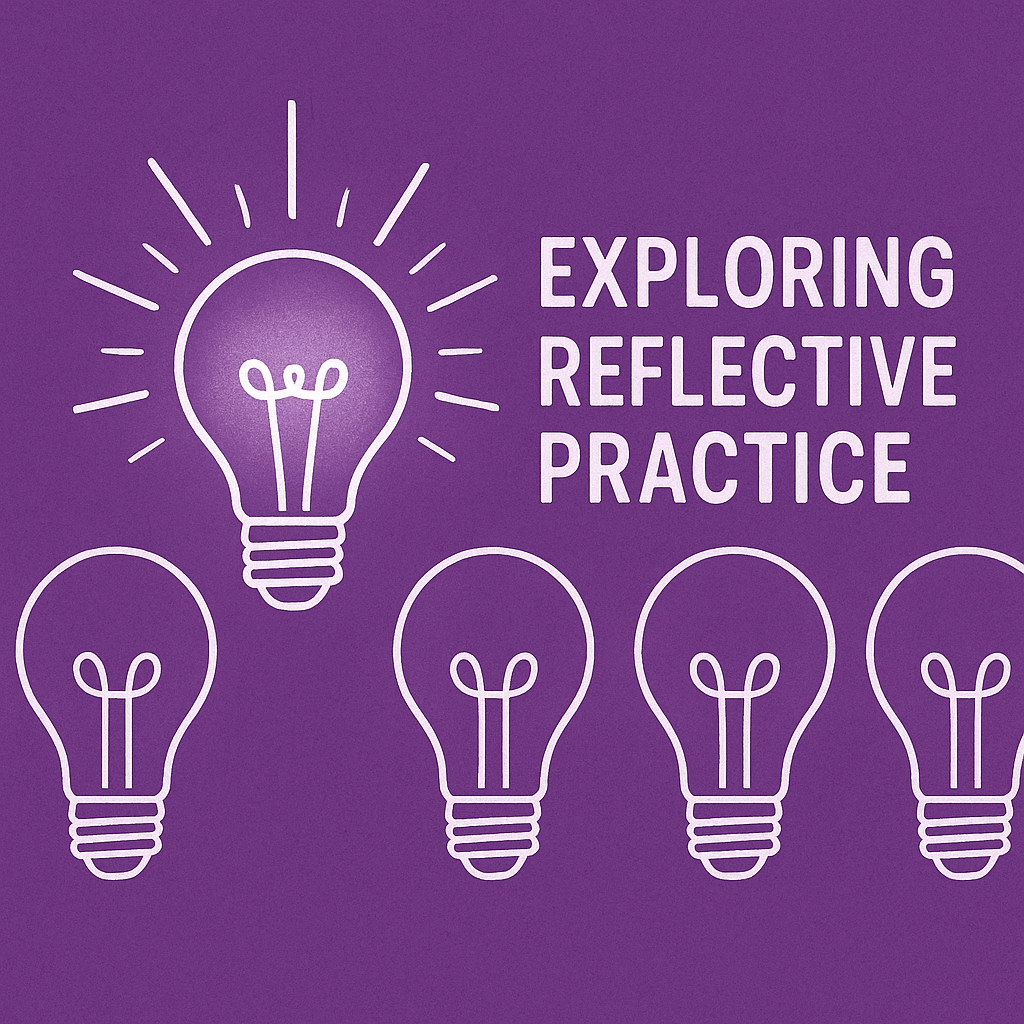The Heart of Supervison: Reflective Practice
The Heart of Supervision: Why Reflective Practice Matters
Why is a robust reflective practice so essential? According to the professional bodies, it is in supervision that reflective ractice is firmly rooted.
- The European Mentoring and Coaching Council (EMCC) describes supervision as, “a safe space for reflective dialogue.”
- The Association for Coaching (AC) frames it as, “a formal and protected time for facilitating a coach’s in-depth reflection on their practice.”
- The International Coaching Federation (ICF) calls supervision, “a dynamic and reflective process.”
But what does it really mean to be reflective – and how does it enrich our practice?
Reflection isn’t just something we do after the fact. It can happen before, during, and after our experiences and interactions. Donald Schön (1983), in The Reflective Practitioner, gave us two lenses: reflection-in-action (the how and when) and reflection-on-action (the looking back). Building on this, many practitioners also talk about preflection, a kind of anticipatory reflection that happens before we even begin.
1. Preflection: Reflecting Before Action
Before stepping into the coaching space, it helps to pause and consider:
- What do I bring into this session?
- What assumptions or expectations am I holding?
- What’s my intention?
This moment of mindfulness sharpens our presence. It’s not about scripting, but about preparing ourselves to listen deeply, free from unnecessary clutter. The EMCC, AC and ICF all remind us that intentionality is at the heart of ethical, client-centred practice – and preflection is the grounding for that.
2. Reflection-in-Action: Real-Time Awareness
This is Schön’s ‘thinking on our feet’ which happens when we notice or sense something. We might silently ask ourselves:
- Is my client leaning in – or withdrawing?
- Am I following their thread, or my own?
- What am I sensing beneath the words?
Reflection-in-action is a skillful dance. It requires presence, agility and a willingness to pivot. It’s also where deep trust and partnership is co-created, because our client feels that we are truly with them, moment to moment.
3. Reflection-on-Action: Learning After the Moment
Once the session closes, the real work of learning begins. We sonsider things like:
- What happened?
- What choices did I make, and why?
- What worked – and what would I do differently next time?
Here we move into EMCC’s territory of critical self-reflection. This is where growth deepens: where patterns become visible, where feedback is integrated, where we hold ourselves accountable to professional and ethical standards.
Three Dimensions of Reflection
To make our reflective practice truly holistic, it helps to engage on three levels: cognitive, emotional, and somatic.
1. Cognitive Reflection: Thinking about Thinking
This is the rational, structured dimension:
- What models was I drawing on?
- What led me to ask that question?
- What else might I have tried?
It’s essential for sharpening our methods, but if we stay here alone, reflection risks becoming a purely cognative, intellectual exercise.
2. Emotional Reflection: Tuning into Feelings
Coaching is emotional work – for us as much as for our clients. Paying attention to our feelings offers deeper truths:
- When did I feel energised or drained?
- Was I triggered, and if so, what does that say about me?
- How did the energy in the room shift?
Both the ICF and AC emphasise emotional self-awareness as central to ethical practice. Without it, we risk projecting our own story onto the client’s and may be influenced by our triggers or cognative bias.
3. Somatic Reflection: Listening to the Body
The body often knows before the mind does. Somatic reflection might ask:
- What sensations arose during the session?
- Where did I feel tension or ease?
- How did my posture, breath or energy shift?
This level of reflection can illuminate unconscious responses and heighten presence. It is particularly powerful when working in embodied or emotionally charged spaces.
Reflection vs Reflexivity
It’s also worth distinguishing between reflection and reflexivity.
- Reflection asks: What happened? What did I do? What can I learn?
- Reflexivity goes deeper: How do my values, biases or cultural background shape how I see and act? Why did I respond in that way? It is not always comfortable, but it is essential if we are to coach ethically and inclusively.
What’s next?
Reflective practice is not an optional add-on for professionals in any field or sector; it is the very foundation of good professional practice and that includes coaching, mentoring and supervision itself. Whether you reflect in supervision, in-sessions or in our quiet moments of self-inquiry, reflection enables us to remain intentional, present and ethical. It reminds us that we, too, are always learning by staying open, curious and willing to grow.
If you are looking for one-to-one or group supevision why not take a look at what Caroline can offer?
If you’re curious to learn more, why not enroll onto ‘Exploring reflective Practice’ on the Jigsaw Learning Hub and gain 5 ICF CCE hours?

